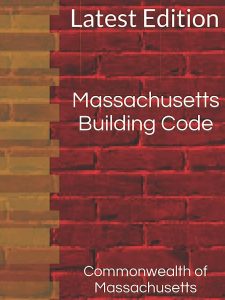 by Phil Thibault
by Phil Thibault
In older cities like Lowell and Lawrence, a major challenge to renovating and remodeling older structures is related to the Building Code. There is a level of confusion that exists depending on the source of the information and their knowledge of what to look at and where to look. The easiest assumption in a project involving an existing building is everything needs to be brought up to the lates building code. The answer is far more nuanced than that when paired with various aspects of building codes.
Treating any construction as if it were new may be the easiest for the designer and contractor. There would be only one resource to reference, the State Building Code. This could be the “commercial” code or the “residential” (also known as one and two family) code based on the occupancy use. New construction follows a prescriptive method as check list of items to follow. Building characteristics, construction types, egress, fire protection, etc. This provides an “if this than that” approach to building codes.
Existing buildings can be repurposed in the same manner. This however may not provide the most economical return for the investment. Let us be clear that the building codes do provide a comparison for life safety based on investment cost and not just a safety at any cost criteria. There are exemptions provided in building codes that can be seen as an “opt out” if a relative benefit is not accomplished based on the full application of the code.
 The Existing Building Code, in Massachusetts it sometimes is referred as Chapter 34, permits the designer to examine the performance of the existing structure.
The Existing Building Code, in Massachusetts it sometimes is referred as Chapter 34, permits the designer to examine the performance of the existing structure.
A performance compliance report rates the existing structure or space for safety in three categories: Fire Safety, Means of Egress, and General Safety. There are twenty-one points to review and evaluate for a numerical score. These are based on the condition of the existing aspect of review and the relative safety it provides. A numerical score is calculated for each of the three categories. All three categories must receive a passing grade to be acceptable to the authority having jurisdiction (building department or inspectional services).
 If a category does not receive a passing score, that category should be reexamined to see where remedial work could be focused to provide a passing grade.
If a category does not receive a passing score, that category should be reexamined to see where remedial work could be focused to provide a passing grade.
I had a project that required the installation of a fire rated door to provide a passing score and thus eliminating some major structural renovations. This saved thousands of dollars and months of time with the benefit that the existing building’s performance was enhanced and provided the required safety for the occupants. I have also provided a performance compliance report that permitted a nearly doubled increase of occupancy for a dormitory in the Fenway District of Boston.
A performance compliance review may often be the best course of action when dealing with an existing structure that is less than a full “gut” renovation. It is not a panacea to renovating an existing building. It is the best first look.














